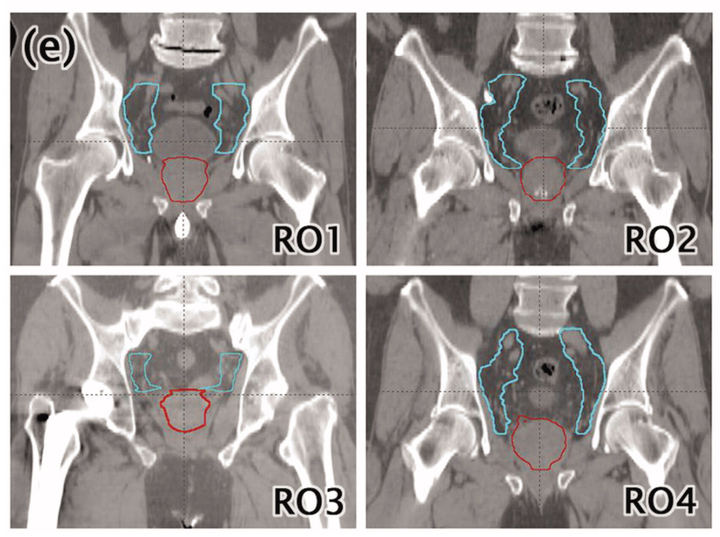Reduction of inter-observer contouring variability in daily clinical practice through a retrospective, evidence-based intervention
 Image credit: Haley Patrick
Image credit: Haley PatrickAbstract
Background: Inter-observer variations (IOVs) arising during contouring can potentially impact plan quality and patient outcomes. Regular assessment of contouring IOV is not commonly performed in clinical practice due to the large time commitment required of clinicians from conventional methods. This work uses retrospective information from past treatment plans to facilitate a time-efficient, evidence- based intervention to reduce contouring IOV.
Methods: The contours of 492 prostate cancer treatment plans created by four radiation oncologists were analyzed in this study. Structure volumes, lengths, and DVHs were extracted from the treatment planning system and stratified based on primary oncologist and inclusion of a pelvic lymph node (PLN) target. Inter-observer variations and their dosimetric consequences were assessed using Student’s t-tests. Results of this analysis were presented at an intervention meeting, where new consensus contour definitions were agreed upon. The impact of the intervention was assessed one-year later by repeating the analysis on 152 new plans.
Results: Significant IOV in prostate and PLN target delineation existed pre-intervention between oncologists, impacting dose to nearby OARs. IOV was also present for rectum and penile-bulb structures. Post-intervention, IOV decreased for all previously discordant structures. Dosimetric variations were also reduced. Although target contouring concordance increased significantly, some variations still persisted for PLN structures, highlighting remaining areas for improvement.
Conclusions: We detected significant contouring IOV in routine practice using easily accessible retrospective data and successfully decreased IOV in our clinic through a reflective intervention. Continued application of this approach may aid improvements in practice standardization and enhance quality of care.